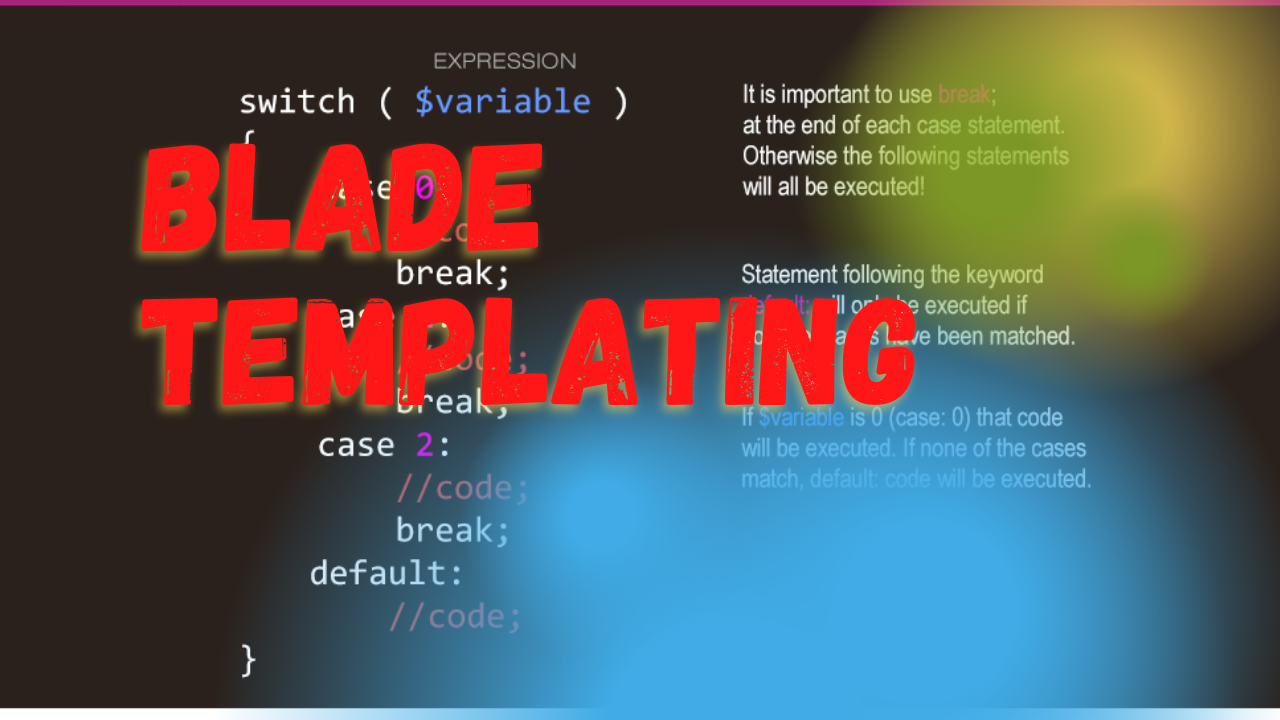Laravel Blade is the powerful templating engine included with Laravel, known for its elegance and simplicity. Blade allows you to work more efficiently by providing a rich set of features like template inheritance and data binding. This article dives into how you can use Blade templating to enhance your views and streamline your front-end development in Laravel.
Introduction to Blade Templating
Blade templating is a key feature of Laravel that simplifies the task of writing PHP code in your views. Unlike other PHP templating engines, Blade does not restrict you from using plain PHP code in your views, but it does provide a more convenient syntax for common tasks.
Basic Blade Syntax
Here are some fundamental aspects of Blade syntax:
- Echoing Data: Blade provides a concise syntax for echoing data. Use curly braces
{{ }}to escape HTML entities automatically:<p>{{ $name }}</p> -
Control Structures: Blade makes tasks like conditional statements and loops simpler with directives:
@if($name == 'John') <p>Hello, John!</p> @else <p>Hello, Stranger!</p> @endif @foreach ($users as $user) <p>{{ $user->name }}</p> @endforeach
Master Layouts
One of Blade’s most powerful features is template inheritance, which helps in maintaining a consistent layout throughout your application. Create a master layout with elements that are common across pages:
<!-- layouts/app.blade.php -->
<html>
<head>
<title>App Name - @yield('title')</title>
</head>
<body>
@include('layouts.header')
<div class="container">
@yield('content')
</div>
@include('layouts.footer')
</body>
</html>
In this layout, the @yield directive is used to display the content of child pages.
Extending a Master Layout
To use the master layout in other views, use the @extends directive:
@extends('layouts.app')
@section('title', 'Home Page')
@section('content')
<p>This is the home page.</p>
@endsection
This view extends the app layout and defines sections for title and content.
Components and Slots
Blade components and slots are a great way to reuse code and organize complex layouts. Define a component:
<!-- components/alert.blade.php -->
<div class="alert alert-{{ $type }}">
{{ $slot }}
</div>
Use it in views:
<x-alert type="danger">
This is an error alert!
</x-alert>
Advanced Blade Features
-
Blade Directives: You can define your own custom Blade directives if you need functionality beyond what's provided:
Blade::directive('mydirective', function ($expression) { return "<?php echo 'mydirective ' . $expression; ?>"; }); -
Service Injection: Blade allows you to inject services directly into your views using the
@injectdirective:@inject('metrics', 'App\Services\MetricsService') <div> Monthly Revenue: {{ $metrics->monthlyRevenue() }} </div>
Conclusion
Laravel Blade templating not only makes your views cleaner and more readable but also enhances your workflow by allowing for more structured and maintainable code. By mastering Blade, you can take full advantage of Laravel's capabilities to build impressive and effective applications.
Embrace Blade templating to elevate your Laravel projects with efficient, powerful, and visually appealing views.
This blog post aims to comprehensively guide readers through Laravel Blade templating, showing how it enhances front-end development through examples and explanations of its key features.




